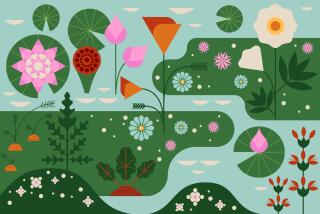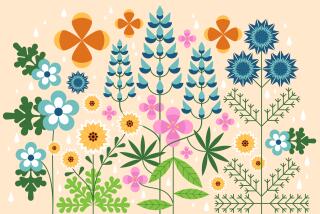Is It Too Wet to Plant?
Gardeners appreciate rain, but even they get enough when extra wet weeks like these put gardening on hold. What to do?
“It’s very important to stay out of the garden,” said designer Christine Rosmini, who grows hundreds of plants on no less than three connected hillside lots in Los Angeles. “No matter how badly you want to plant that pony pack of pansies that’s been sitting around for two weeks, don’t walk on the soil when it’s wet.” Otherwise you will compact it into a dense, airless mass, destroying all efforts at soil improvement. Roots need oxygen.
What about all those tempting bare root roses and fruit trees at nurseries, the big January planting opportunity? Go ahead and buy your roses (or pansies), but wait until your soil no longer sticks to the garden spade to plant. Make sure it is crumbly or you will be planting your new rose in a sticky gumbo “and the rose will not be able to breathe for the rest of its life,” according to Tom Carruth, horticulturist at Weeks Wholesale Rose Growers.
In a sandy soil, drying out may take only a few days, in clay soils, perhaps a week or even two. If you buy packaged roses, immediately take them out of their wrappings and put them in a bucket or five gallon nursery can, then cover the roots loosely with the sawdust they were wrapped with and keep constantly moist (leave them out in the rain). They can stay this way for several weeks.
The same advice applies to fruit trees. Soak them overnight in a bucket of water before planting and pinch off the tips of any growth that has leafed out. If the new growth has lost its green color from lack of light (etiolated), snap it off and other dormant buds will sprout.
On the plus side, heavy rains leach harmful mineral salts out of the soil, which can brown the edges of leaves and stunt growth. But they also wash away soluble fertilizers, so if you just fertilized your citrus (a January job) with chemical fertilizers containing the nitrate form of nitrogen, or even the ammonium or urea forms, it was a wasted effort. Several inches of rain will have washed them away, according to Paul Rogers, the horticulturist at Kellogg Supply.
He cautions that you shouldn’t fertilize again, or fertilize at all, until after the soil has dried a bit. Right now, plants are stressed from too much water and too little oxygen (they can’t breathe under water either).






